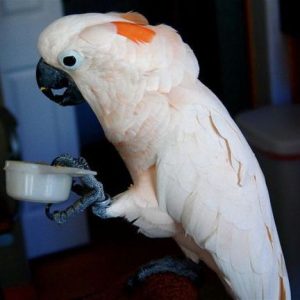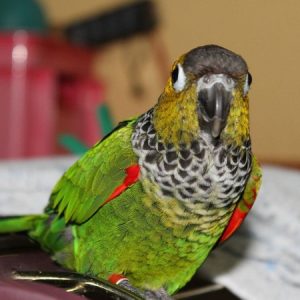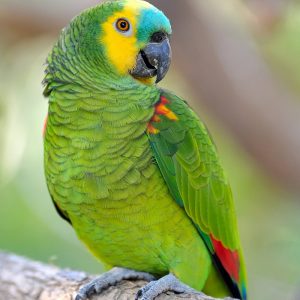The Enchanting Blue and Gold Macaw Parrot: A Comprehensive Guide
In the world of exotic avian companions, the Blue and Gold Macaw (Ara ararauna) stands as a vibrant and captivating species. Renowned for its striking plumage and outgoing personality, this comprehensive guide provides insights into the characteristics, care requirements, and considerations involved in acquiring or caring for a Blue and Gold Macaw.
Meet the Blue and Gold Macaw: An Overview
Exquisite Plumage: The Blue and Gold Macaw is characterized by its stunning plumage, blending brilliant blue and vivid gold hues. Its vibrant colors, coupled with a distinctive facial pattern, make it a visually striking and easily recognizable species.
Impressive Size: These macaws are among the larger parrot species, with an average length ranging from 30 to 36 inches (76 to 91 cm). Their long, graceful tails add to their overall majestic appearance.
Lifespan: With proper care and attention, Blue and Gold Macaws have an impressive lifespan, often reaching 60 years or more in captivity. This longevity underscores the commitment required when welcoming one into your home.
Blue and Gold Macaw in Captivity: Care Essentials
Nutritional Requirements: A well-balanced and nutritious diet is crucial for the health of Blue and Gold Macaws. Their diet should include a variety of fresh fruits, vegetables, high-quality pellets, and nuts. Calcium supplements may be necessary to support their bone health.
Mental Stimulation: Known for their high intelligence, Blue and Gold Macaws thrive on mental stimulation. Providing an array of toys, puzzles, and opportunities for play is essential. Regular interaction with their human companions helps prevent boredom.
Social Interaction: These sociable birds form strong bonds with their human caregivers. Regular social interaction is vital to their well-being. Consider adopting or keeping them in pairs to fulfill their need for companionship.
Cage and Living Space: A spacious and well-equipped cage is essential for the comfort of Blue and Gold Macaws. The cage should allow for natural movement, include perches of varying sizes, and feature toys for enrichment. Out-of-cage time for exercise is equally important.
Blue and Gold Macaw Price: Factors to Consider
Initial Investment: The price of a Blue and Gold Macaw can vary widely based on factors such as age, color mutations, and the reputation of the breeder or seller. On average, prospective owners should be prepared to invest several thousand dollars for a well-bred, hand-fed Blue and Gold Macaw.
Ongoing Expenses: Beyond the initial purchase price, owners should budget for ongoing expenses. These include food, veterinary care, toys, and potential unexpected medical costs. The financial commitment extends to the bird’s lifespan, necessitating careful financial planning.
Adoption and Rescue: For those seeking a more cost-effective option, adopting a Blue and Gold Macaw from a reputable rescue organization is a compassionate choice. Adoption fees are generally lower than the cost of purchasing from a breeder.
Lifespan and Long-Term Commitment
Longevity: The Blue and Gold Macaw’s considerable lifespan requires a long-term commitment from owners. With proper care, these parrots become cherished companions for decades. Potential owners should be prepared for the responsibilities associated with caring for a bird with such longevity.
Emotional Bonding: Blue and Gold Macaws are known for forming strong emotional bonds with their human caregivers. This bond requires time, patience, and consistent positive interaction. Their social nature means they thrive on the companionship of their human family.
Weaning Age and Development
Weaning Process: The weaning age of Blue and Gold Macaw chicks typically occurs between 12 to 16 weeks. During this period, they transition from a diet of hand-feeding formula to consuming solid foods independently. The weaning process is a critical developmental stage.
Independence and Socialization: As Blue and Gold Macaws mature, they undergo crucial stages of development. This includes gaining independence and learning social behaviors. Owners should provide a supportive environment to facilitate healthy growth and positive socialization.
Blue and Gold Macaw for Sale Near Me: Sourcing and Considerations
Choosing Reputable Breeders: Selecting a reputable breeder is crucial when considering the purchase of a Blue and Gold Macaw. Responsible breeders prioritize the health and well-being of the birds, provide necessary documentation, and offer guidance on care.
Local Avian Rescues: Exploring local avian rescues and adoption centers is an alternative for those seeking to adopt a Blue and Gold Macaw. Rescue organizations play a vital role in rehoming birds and providing them with a second chance at a loving home.
Conclusion: A Majestic Companion
In conclusion, the Blue and Gold Macaw, with its breathtaking beauty and engaging personality, is a majestic companion that captures the hearts of bird enthusiasts. Whether acquired through reputable breeders or adopted from rescue organizations, the journey of caring for a Blue and Gold Macaw is one of commitment, love, and shared joys of companionship. As these remarkable birds continue to enchant households around the world, the bond formed between humans and Blue and Gold Macaws remains a testament to the beauty of the avian-human connection.
Other Birds
Umbrella Cockatoo
Triton Cockatoo
Sulphur Crested Cockatoo
Buy Moluccan Cockatoo Parrots online
Buy Timneh African Grey Online
Goffin Cockatoo
Buy Congo African Grey Online
Buy Hyacinth Macaw Parrots online




